After writing a post about fruits with black seeds, I came across a Quora question from someone asking about a fruit that’s green but has black seeds. Since there are many fruits that fit this description, I decided to list them here so that anyone curious about such fruits—or trying to identify one based on these characteristics—can compare their fruit with the ones in my list. I hope you find it helpful.
1. Kiwi

This small green fruit with tiny black seeds is packed with vitamin C and a burst of tangy sweetness. Originally from the hills of Southwest China, kiwi is now enjoyed worldwide as a refreshing snack or dessert. Its soft, bright-green flesh is not only delicious but also helps boost immunity, making it a healthy choice any time of the day.
2. Papaya

With its green skin, black seeds, and vibrant orange flesh, papaya brings a burst of tropical sweetness to the table. Its subtle musky notes pair beautifully with breakfasts, salads, and chilled desserts. Packed with antioxidants, it’s more than just a treat — it’s a skin-loving, inflammation-fighting fruit that has journeyed from Central America to kitchens all over the world.
3. Custard Apple (Cherimoya / Sweetsop)
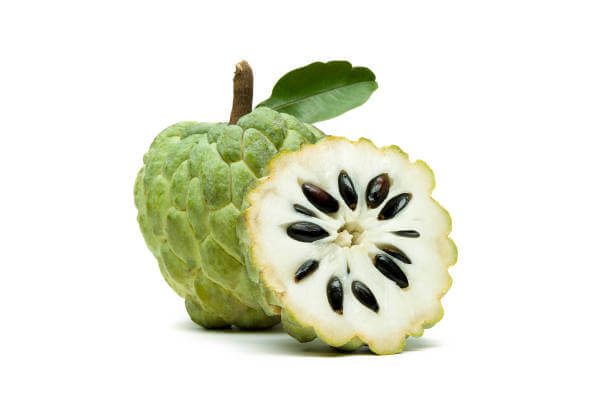
Bumpy green skin hides the custard apple’s real treasure — silky flesh studded with glossy black seeds. It is prized for its creamy, custard-like flesh and sweet tropical taste. Native to the Americas, it’s sometimes called “cherimoya” or “sweetsop” and is enjoyed fresh or in desserts. Its rich flavor and smooth texture make it a unique treat among tropical fruits.
4. Watermelon
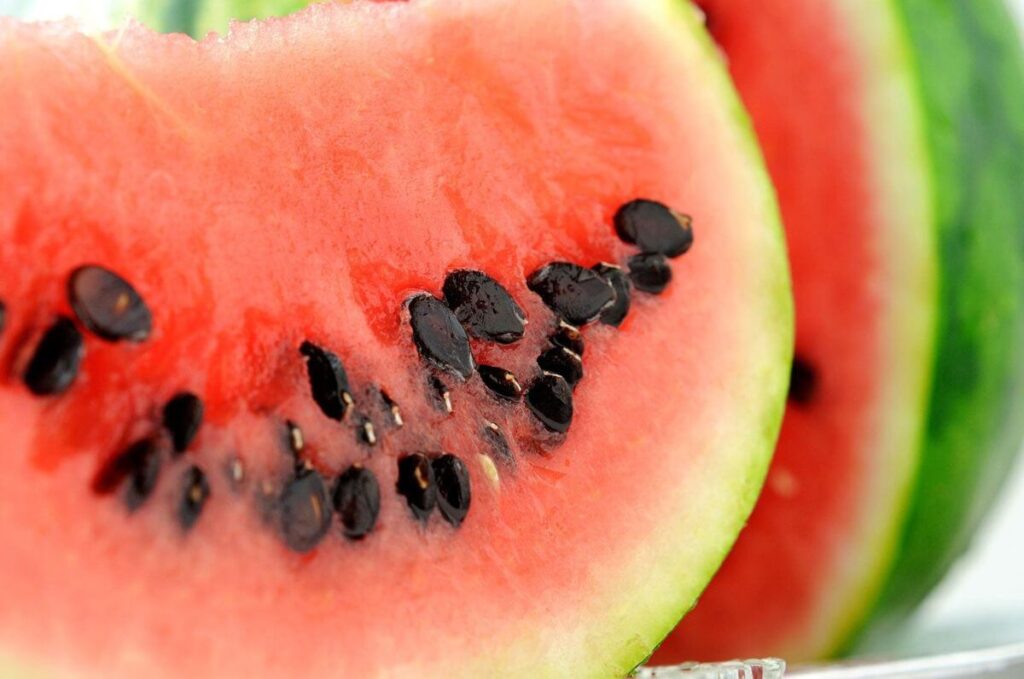
Though best known for its juicy red flesh, watermelon starts out as a large green fruit speckled with black seeds. A member of the melon family, it’s naturally hydrating and full of nutrients like antioxidants and vitamin C. Whether sliced fresh, blended into smoothies, or eaten straight from the rind, watermelon is a summer favorite.
5. American Pawpaw
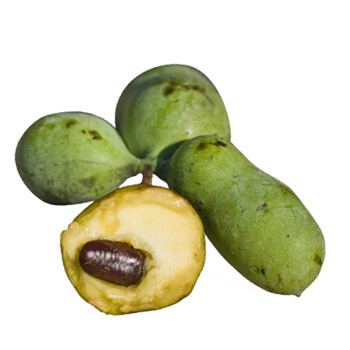
This unusual green fruit with dark seeds grows on small trees in North America and is loved for its banana-like flavor and creamy texture. The American pawpaw is nutritious, rich in vitamins and minerals, and is often enjoyed fresh from the tree. Its custard-like flesh makes it a hidden gem among wild and cultivated fruits.
6. Soursop (Graviola)
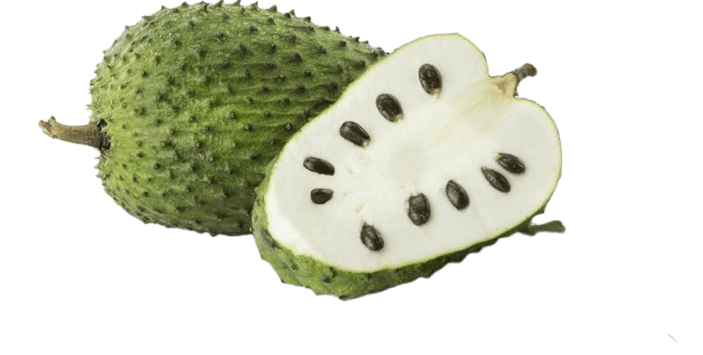
Beneath its spiky green skin, soursop hides snowy white flesh dotted with black seeds and bursting with tropical aroma. Native to tropical regions of the Americas, it’s known for its unique blend of sweet and sour flavors, often compared to strawberry and pineapple. Rich in vitamin C, soursop is enjoyed fresh or in drinks, desserts, and smoothies.
7. Mamoncillo
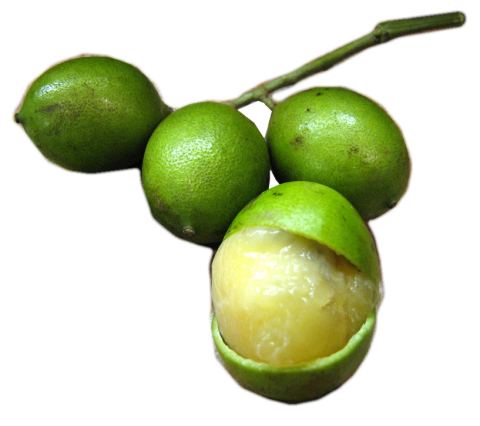
Mamoncillo is a small round green fruit with a single large black seed, popular across the Caribbean and Central America. Its juicy, tangy-sweet pulp tastes like a mix of lime and peach, making it a refreshing seasonal treat. Known by many names such as quenepa and guinep, it’s often eaten fresh, straight from the shell.
8. Passion Fruit
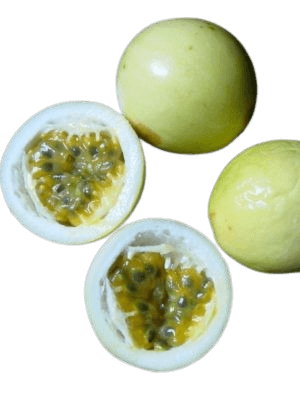
Crack open a passion fruit and you’ll find a fragrant burst of golden pulp studded with crunchy black seeds. Known for its tropical aroma and refreshing flavor, it’s rich in vitamin C, fiber, and antioxidants. The seeds are edible, adding a pleasant crunch, and the fruit is often scooped out fresh or used in juices, desserts, and sauces.
9. Lucuma
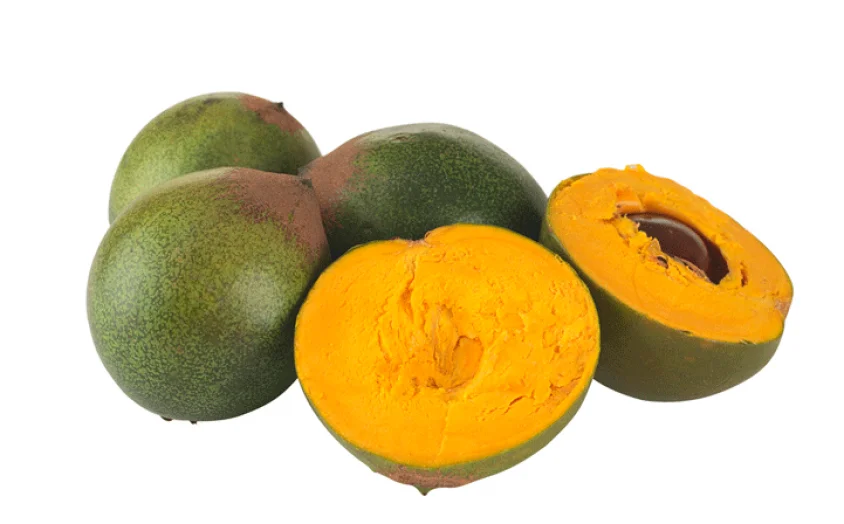
Lucuma is a green-skinned fruit with black seeds, native to the Andean regions of Peru, Chile, and Ecuador. Beneath its rough exterior lies golden, dry flesh with a naturally sweet, maple-like flavor. Packed with antioxidants such as polyphenols and carotenoids, lucuma is valued both as a nutritious fresh fruit and as a powder used in smoothies, ice cream, and baked goods.
10. Black Sapote
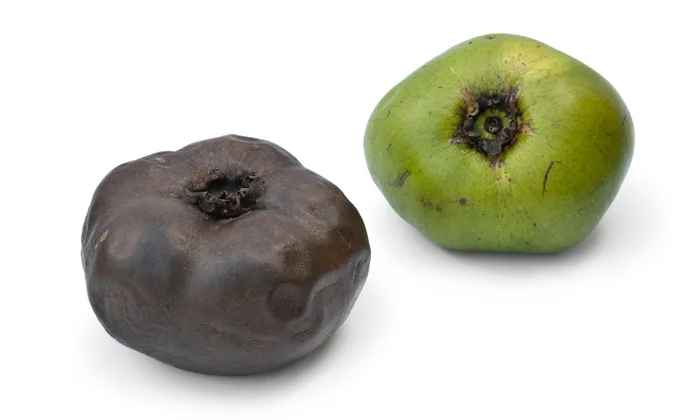
Despite its name, black sapote is a green fruit with black seeds that turns soft and dark brown when ripe. Native to Central America, it’s nicknamed “chocolate pudding fruit” for its creamy texture and dessert-like flavor, though it tastes more like honey and molasses. This persimmon relative is eaten fresh or blended into smoothies, cakes, and other sweet dishes.
11. Banana Passionfruit
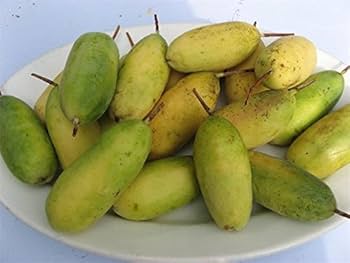
Banana passionfruit is an elongated greenish-yellow fruit with soft black seeds inside bright orange pulp. Belonging to the passionflower family, it offers a tangy-sweet flavor and is packed with vitamins A and C, plus fiber. Native to South America, it’s enjoyed fresh, in drinks, or as a tropical twist in jams and desserts.
12. Batuan Fruit
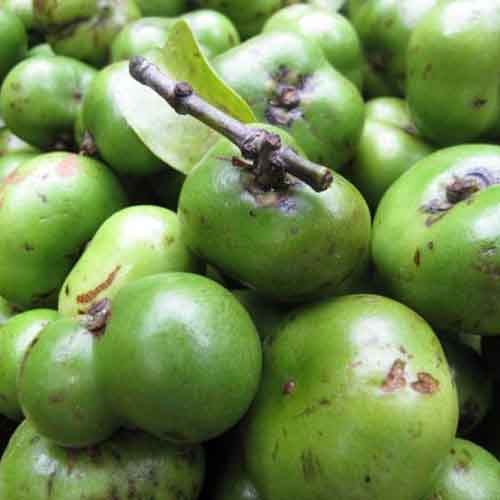
In Filipino kitchens, batuan is the go-to fruit for adding a lively tang to soups and stews. Its green skin hides black seeds and a sharply citrus flavor that wakes up any savory dish. Beyond cooking, it’s also turned into jams and preserves, where its tartness cuts beautifully through sweetness and richness.
13. Guama
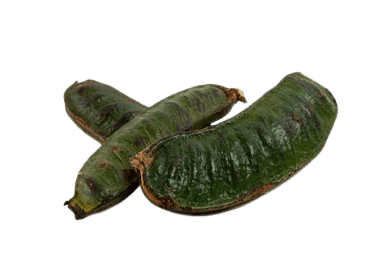
Guama, or ice cream bean, is a long green pod containing black seeds wrapped in soft, white, cottony pulp. The pulp tastes like a mix of vanilla and cotton candy, making it a popular snack in Central and South America. Sweet and airy, it’s eaten fresh from the pod or paired with other tropical fruits for a refreshing treat.
14. Jatropha Fruit
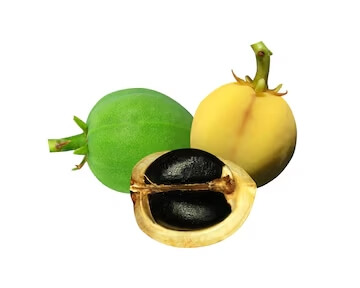
Jatropha grows on a tough tropical shrub whose small green fruits hold glossy black seeds. In some parts of Mexico, the seeds are cooked and eaten, but raw they can be dangerously toxic. Valued for far more than its fruit, this plant serves as medicine, a living fence, and even a source of biofuel — though it demands respect in handling.
Check Out Other Fruits with Black seeds:
